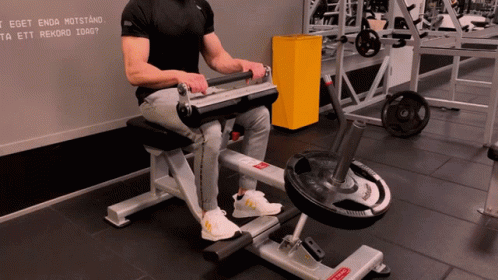Calf Raises:Def and Muscles Worked
Muscles Worked in Calf Raises
- Gastrocnemius — the prominent, two-headed superficial calf muscle (medial and lateral heads). It drives plantar flexion of the ankle and assists knee flexion; standing variations highlight this muscle.A gastrocnemius muscle calf raise strengthens the calf by lifting the heels while keeping the balls of the feet on the ground or step.
- Soleus — a deep, endurance-oriented muscle beneath the gastrocnemius. Highly active in seated calf raises, it stabilizes the body during standing and contributes to powerful push-off while walking or running.The soleus is a deep calf muscle located beneath the gastrocnemius. It originates from the tibia and fibula, inserting into the Achilles tendon. Its primary function is plantar flexion of the foot, especially during standing and walking. The soleus is vital for posture, endurance, and maintaining balance while upright.
- Plantaris — The plantaris is a small, thin muscle located in the posterior leg between the gastrocnemius and soleus. It has a long tendon that runs down to join the Achilles tendon. Though weak in function, it assists in plantar flexion of the ankle and flexion of the knee, supporting movement.
- Tibialis Posterior — a deep stabilizer aiding ankle stability and foot inversion, helping control motion throughout the raise. The tibialis posterior is a deep muscle of the lower leg, positioned behind the tibia. It plays a crucial role in stabilizing the ankle and supporting the medial arch of the foot. Its main functions include plantar flexion and inversion of the foot, aiding balance, walking, and running efficiency.
- Peroneus (Fibularis) Longus & Brevis — lateral lower-leg muscles that assist plantar flexion and contribute to ankle stability and balance.
- Flexor Hallucis Longus & Flexor Digitorum Longus — deep toe-flexor muscles that help maintain smooth plantar flexion and proper foot mechanics during the exercise.




